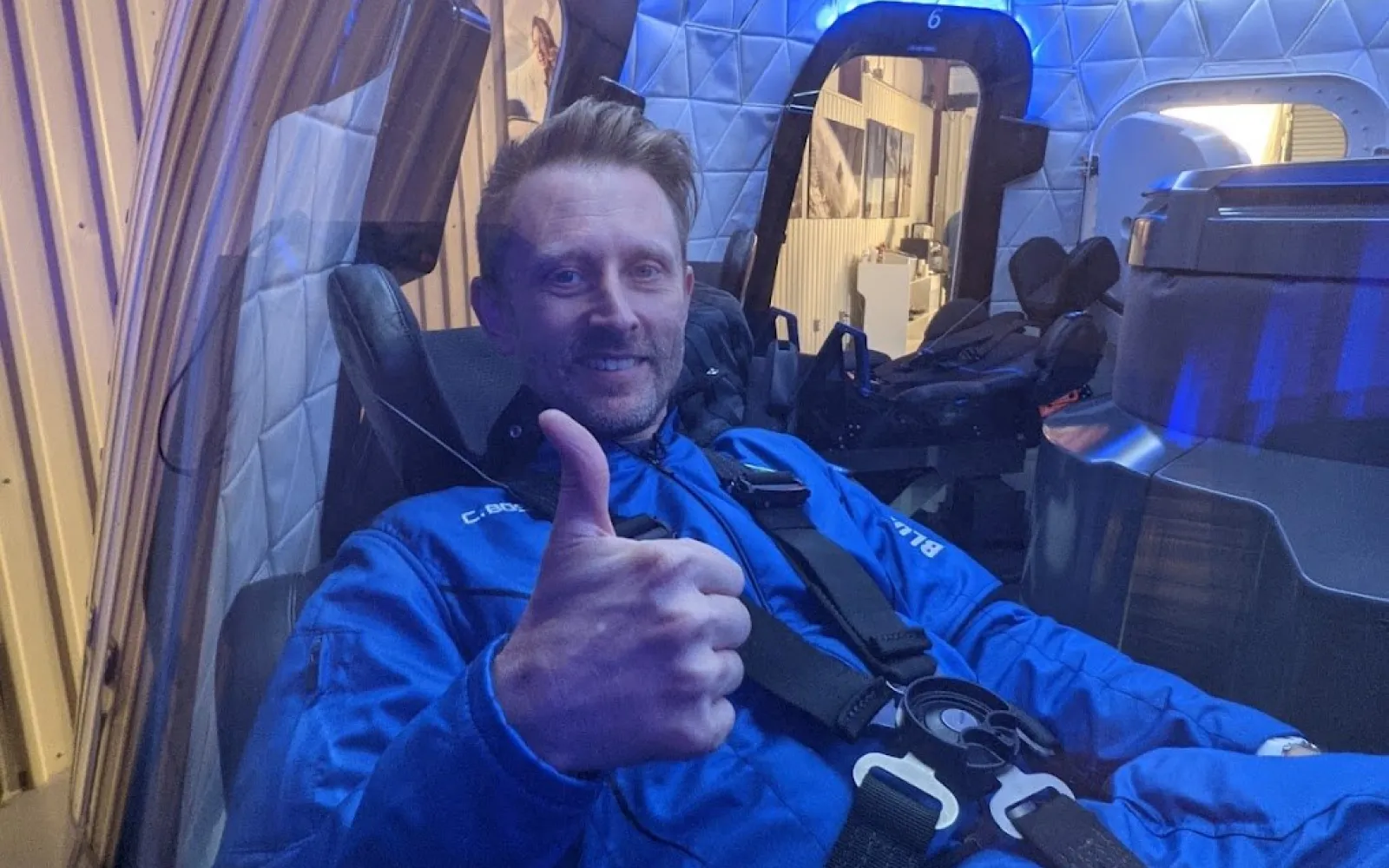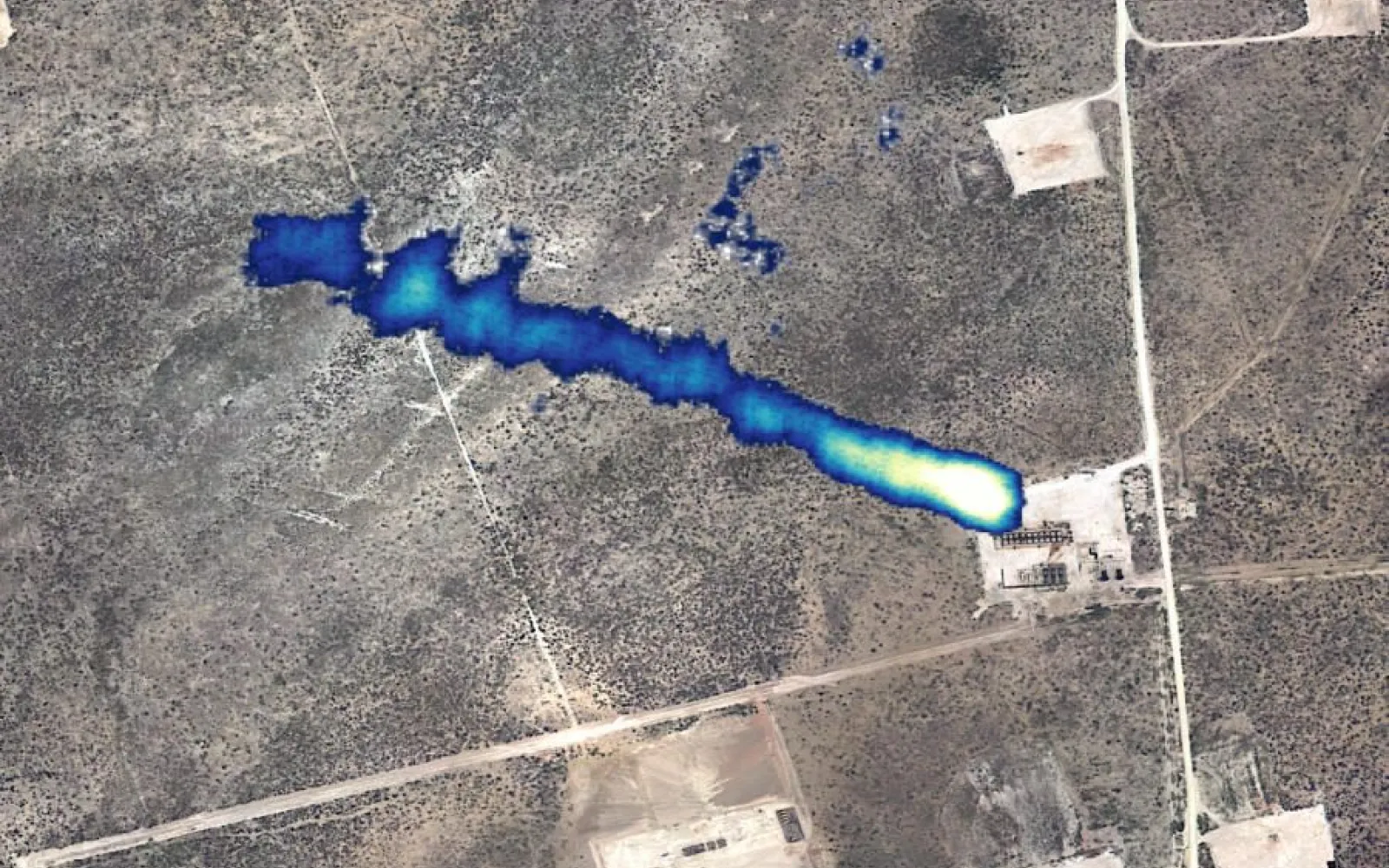

Planet
Providing daily data and insights about Earth
The day I learned I was flying to space, I babbled like a boy with a new toy, repeating over and over, “I’m going to space,” savoring the feeling of those four words coming out of my mouth. That whole day is now a blur, and my memories of it are scattered from adrenaline and dopamine, but I can still feel the electricity. At the age of 44, after a lifetime of dreaming, and over 20 years of study and work in the space industry, it was finally my time.
On Oct 13, 2021, in West Texas, I will board Blue Origin’s New Shepard for its second manned mission and the 18th flight of its suborbital launch vehicle. At 8.30 AM, a rocket will carry me and three other passengers — entrepreneur Glen de Vries, Blue Origin leader Audrey Powers, and the actor William Shatner — to the Karman line, the globally accepted frontier of space, 100km above sea level.
In ground terms, it’s not far — about the distance from my Australian hometown of Tumbarumba to the capital city of Canberra — yet for most of humanity’s existence space has remained tantalizingly out of reach. I will follow in the footsteps of Blue Origin founder, Jeff Bezos, who took flight on July 20, a date chosen to mark the 52nd anniversary of NASA’s Apollo 11 mission.
The flight will be the fulfilment of a lifelong dream. My fascination began in the 1980s, when my mum would let me stay up to watch Carl Sagan’s Cosmos. I thought then: if I’m allowed to stay up past my bedtime, then it must be special, right? I’m grateful that my parents inspired this love of the stars, because it has taken me further than I ever imagined possible.
My journey to space has been full of twists and turns and dead ends. There have been moments when I wanted to throw in the towel. The first blow came at age seventeen, when I was eliminated from the selection process to become a pilot in the Australian Defence Force. An eye test showed I was partially colorblind, ruling me out for service. Hopes dashed, I proceeded to university, studying mathematics and physics. My 2005 PhD thesis finally connected me to the space industry. Its subject was the development of a space telescope, intended as the primary instrument on a Danish satellite, Roemer. Space missions are hard to come by in Australia, and I relished the opportunity, throwing myself into the systems engineering of the satellite. My PhD thus also doubled as a crash course in spacecraft design.
Sometimes simple words can change the course of a life. Advice from my academic supervisor to “do what you want, not what you studied,” led me to the World Space Congress in Houston, Texas. It was a gathering of space devotees, and a place where, for the first time in my life I felt that I’d found my people. And I was green with envy. The Americans in attendance had attended Space Camp as kids, and could yell out “Buzz” to Aldrin, a frequent Congress speaker, on a first-name basis.
In 2008, after several years of volunteering and organizing at the Congress, a road led to NASA, where I worked as a Space Mission Architect at the Ames Research Center. There, I developed a low-cost lunar lander, and flew one of the first electric passenger planes. At Ames, my team had an epiphany that would later lead to Planet, the company I co-founded with my NASA colleagues. Our insight was that the phones we carried in our pockets possessed more powerful hardware than most satellites, then the size of fridges or trucks.
Our NASA group, called the PhoneSat Project, wondered, why not shoot a phone into space and see if it still worked? To our delight, it did. We wrote an android app to run the entire mission, which took numerous photos, selected the best through an early neural net, processed the image, and transmitted them for download. The phone survived launch on an ordinary rocket with no special treatment, operated in the vacuum of space, and all the hardware functioned normally.
What we learned at Ames became the philosophical premise of Planet, founded in 2011. The company’s mission was grand, even fanciful: we wanted to blanket the sky with satellites, reducing the cost of satellite manufacture a thousandfold, using mobile-phone parts. Our goal for these satellites, called Doves (an instrument of peace, not war), was to photograph every inch of Earth, providing round-the-clock data for agriculture, humanitarian, and global security missions. We achieved that goal: over the course of our company’s short history, it has launched 450 satellites, 200 of them still active, until recently more than any other organization on the planet.
The life of an entrepreneur has its vicissitudes, but none were more challenging than when I left Planet because the company was moving in a different direction than I hoped. Nothing is more harmful to a young company than lack of unity, and so I stepped down. While the path Planet has followed has not been the one I would have chosen, I’m proud the company is a tremendous success.
Setbacks are sometimes opportunities. Next, I joined DCVC, an early investor in Planet, as entrepreneur-in-residence, rediscovering my love of coaching and mentoring. After a couple of years, DCVC made me an Operating Partner and then a full Partner, giving me the opportunity to sit on the other side of the table from entrepreneurs, finding, funding, and growing Deep Tech companies in a variety of sectors, from space to nuclear power to quantum computing.
I started slowly, working with space companies that were solving problems I had faced at Planet. Those problems included how often rockets blew up and how seldom they launched at all. Commercial space flight needed more reliable and frequent launches. That insight led to my first investment, with Peter Beck at Rocket Lab in New Zealand. With innovations such as all-carbon tanks and rocket structures and 3D-printed motors powered by electric turbo pumps, Rocket Lab has mastered the rapid construction of reliable rockets, launching over 100 satellites in three years. It is now a publicly listed company, valued at $7B.
I also channeled energies into my old hobby of music, composing and recording music as “Dr Chrispy.” At first, I revisited songs I’d written while travelling for my NASA job, releasing an album in 2018 titled VHS. Since then, I have continued to write music and my hard drive is again filling up with creative projects. I’ve many new tracks to share with the world, two of which I’ve released to coincide with my spaceflight. Both feature the British actor Stephen Fry.
The first, 60 Miles Up, was first written in 2004 after witnessing the team at Scaled Composites win the Ansari X Prize. Standing in the Mojave Desert one autumn morning, watching Mike Melville pilot SpaceshipOne to over 100km, I became a true believer in democratizing access to space. The second track, One by One, contains a short narrative about the history and value of human spaceflight, expressing my conviction that the flurry of private space flight activity this year is not an historical anomaly but a milestone.
All of this effort has been in service of a single goal. My dream has never been just to get to space myself, but rather to democratize it for all of humanity, so that one day, quite soon, entire generations will look down on the Earth, and as the first astronauts did, fall in love again with our great blue planet, one by one. I hope that with new clarity, our sight undimmed by the atmosphere, some of us will look out to the stars, and decide to set out further, starting a new chapter in our story.
I want my spaceflight to inspire kids like the child I once was about the romance of space and the capacity of science to solve hard problems. Space, if it is to be the future of humanity, must be open to everyone. To launch William Shatner, me, and my fellow space explorers on New Shepard required Blue Origin to solve thousands of technological and scientific challenges, including return of the first-stage booster, the design of the second-stage motor and crew capsule escape system, and the rapid refurbishment and quick turnaround of all the hardware.
I will be the next to go, but many more will follow, I am humbled that I have been given the responsibility to lead the charge. Wish me a safe journey, I’ll see you when I get back from space.




